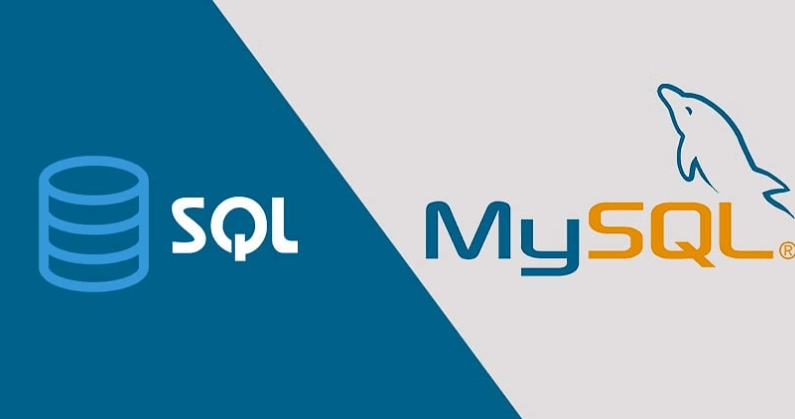Difference Between SQL and MySQL
What is SQL?SQL is an abbreviation used for Structured Query Language. This language is used to maintain and handle the database. It is defined as the standard language to work with databases by ANSI (American National Standards Institute) guidelines. Several other languages allow the user to implement and modify databases. There are only a few minor changes in the syntax of another language. Most queries that can be used to retrieve, add or manipulate data are based on the syntax of the SQL. Structured Query Language was developed at IBM. The user can implement SQL queries that enable the user to add, alter, delete, or update the data in the database. It uses English-like language to write easy-to-understand queries for the databases. The user can implement SQL to handle several relational database management systems such as MySQL, SQL Server, and Oracle. The user can type the code and query in SQL to create or modify the existing databases and develop the schemas for the database. What is SQL Server?SQL Server is an example of a relational database management system that allows the user to store tabular data and perform various operations such as insertion, deletion, and manipulation of the data stored in the databases. It was developed by Microsoft organization. It acts as a platform that makes storing, managing, and retrieving data from different applications and services easier. The user can implement queries using SQL; this language enables the user to interact with the databases. Users can use simple queries to create, update or delete databases, tables, and views. The user can perform several operations on data, making it relatively easier to read the data from the databases. These functions include querying, filtering, sorting, and merging the data. SQL Server also includes features such as high availability, increased scalability, and security. This is why SQL Server is a popular choice among businesses of all sizes. It is used to implement databases in web applications and perform data analysis. What is MySQL?MySQL is a relational database management system developed by MySQL AB software company. It was launched in 1995. Sun Microsystems later acquired the software company. Sun Microsystems is now known as the Oracle Corporation. MySQL comprises two words My, after the name of the co-founder's daughter, and SQL, which is short for the structured query language. It is one of the earliest relational database management systems made available to the general public. Since it was an open-source management system, several variants are available for MySQL. These variants may have different features, but the basic syntax for all the variations is kept the same. The primary code for the management system was developed and written in C and C++. It was supported by all primary operating systems (OS). MySQL is the primary component used with an open-source web application stack known as LAMP. LAMP refers to Linux, Apache, MySQL, and PHP/Perl/Python. How Do You Use SQL with MySQL?
What is the Difference Between SQL and MySQL?Since now, you have formed an understanding of all the necessary concepts related to SQL and MySQL. Let us discuss the difference between SQL and MySQL.
Implementing SQL Commands With Other DatabasesSQL is a standard language that enables users to implement queries to communicate with relational databases to manipulate the data. SQL was initially developed to implement queries in MySQL's most used database management system. The language became very popular as it was quite simple to write queries. Therefore, several other relational database management systems adopted it to interact with the database. Some of the most popular RDBMS that uses SQL are Oracle, Microsoft SQL Server, PostgreSQL, SQLite, and IBM DB2. Several NoSQL databases allow the user to implement SQL-like queries. These include MongoDB and Apache Cassandra. This makes it useful as the user can use queries written in SQL with several databases. These include both relational and NoSQL databases. Do all Databases Use SQL?Though SQL is one of the most popular languages, not all database systems use it to implement queries, it is still the most widely used language that enables the user to manipulate the data in relational databases. Several types of databases use different languages and structures. For instance, NoSQL databases such as MongoDB and Apache Cassandra primarily use a document-based approach and have a different query language. The query language is similar to SQL but different. Moreover, several types of databases, like graph databases and key-value stores, use their unique query language. These data are organized in different manners. Other Database Technologies That Use SQL To Implement Queries
What are SQL and MySQL Used For?SQL is a standard programming language that allows users to manage and manipulate relational databases. SQL is primarily used to develop an application for industries such as finance and healthcare that handles a large amount of data. In contrast to SQL, MySQL is an open-source relational database management system used to manage databases in RDBMS. It enables the user to store, handle and retrieve data in web applications. MySQL is often implemented with PHP and other programming languages, enabling the user to develop dynamic web applications. What Jobs Use SQL and MySQL?
What are the Similarities Between SQL and MySQL?
How to Choose What is Best to Use Between SQL and MySQL?When choosing between SQL and MySQL, the user needs to remember that SQL is a query programming language, meaning that SQL defines the syntax to implement the query where. In contrast, MySQL is a relational database management system that enables the user to execute queries using SQL. MySQL is a relational database management system that allows users to execute queries in SQL. It is a standard language used to add, manipulate or remove data from relational databases, whereas MySQL can be considered a platform to implement the queries.
Next TopicNormalisation in SQL
|
 For Videos Join Our Youtube Channel: Join Now
For Videos Join Our Youtube Channel: Join Now
Feedback
- Send your Feedback to [email protected]
Help Others, Please Share










